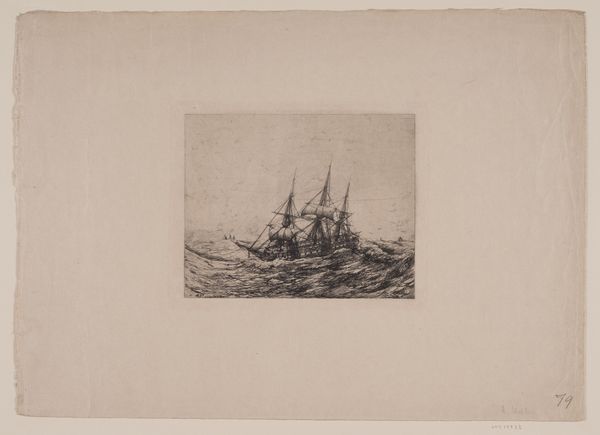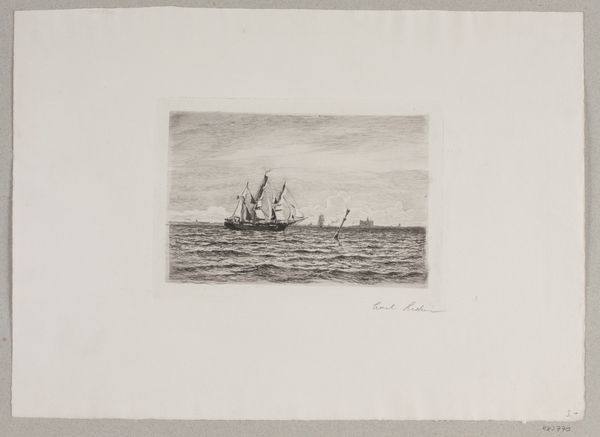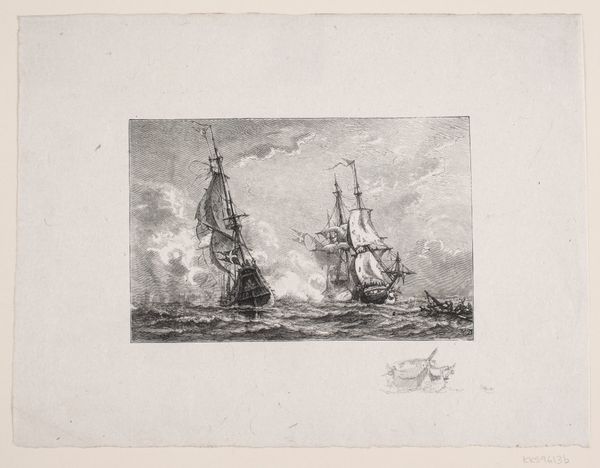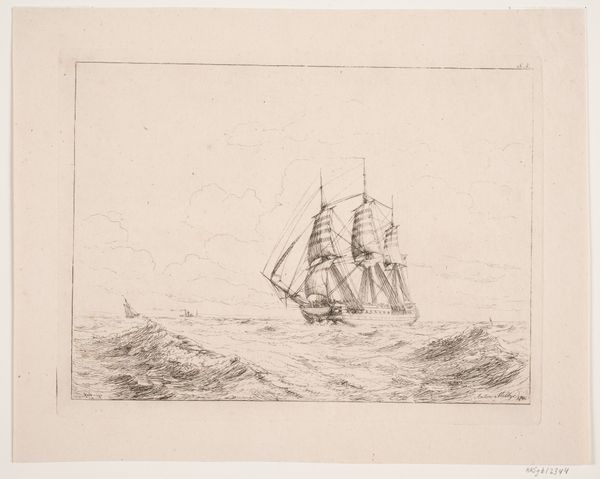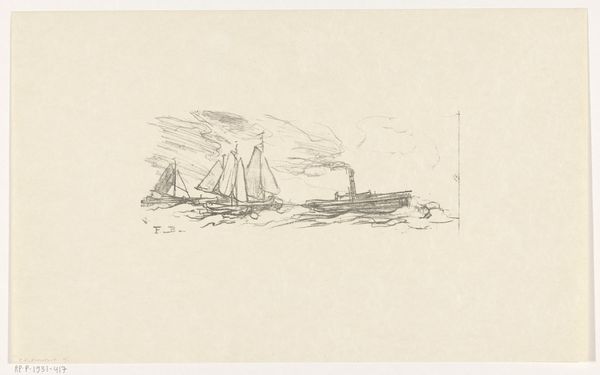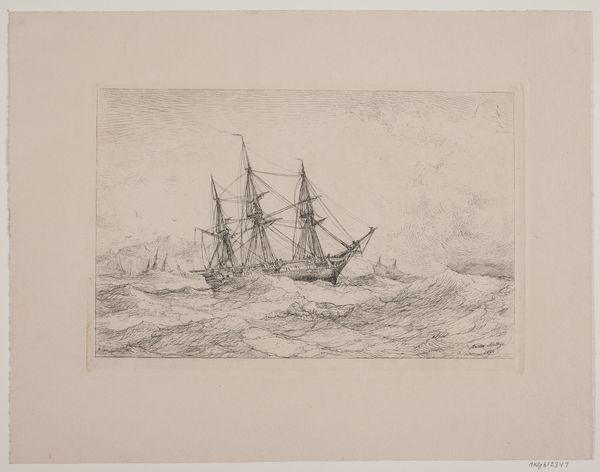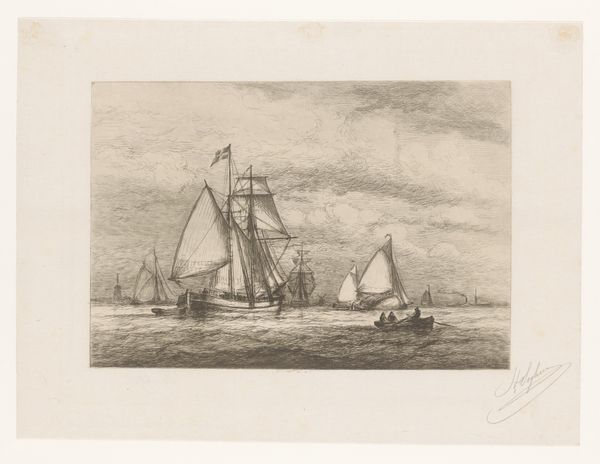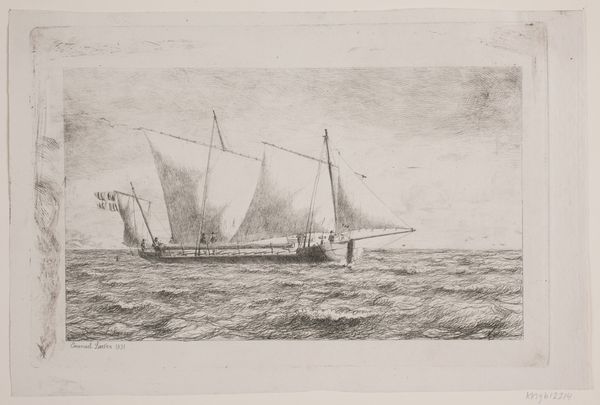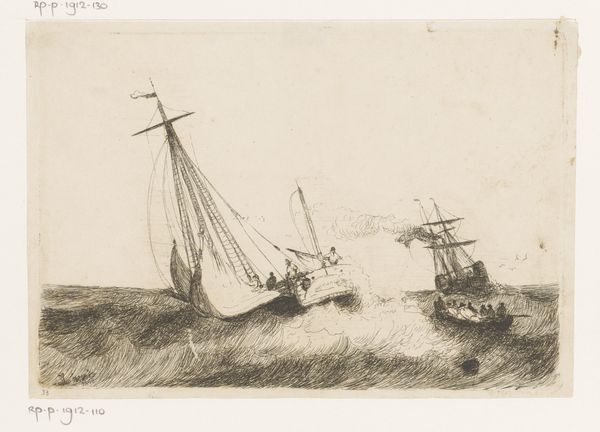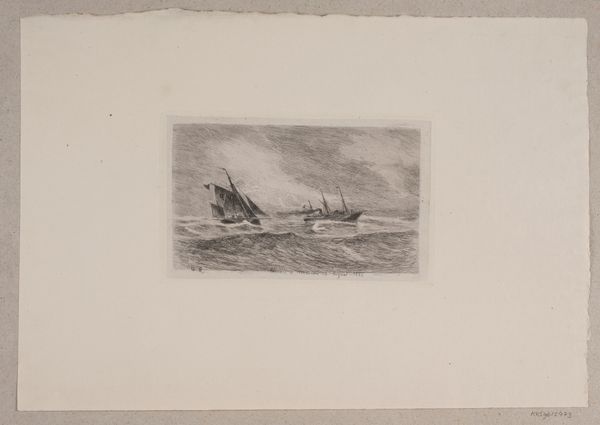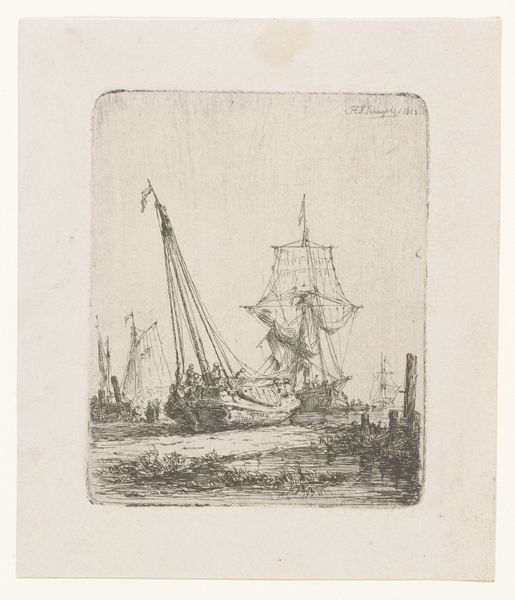
drawing, print, etching
#
drawing
# print
#
etching
#
landscape
#
etching
#
realism
Dimensions: height 160 mm, width 237 mm
Copyright: Rijks Museum: Open Domain
Editor: This is "Zeilschepen, een roeiboot, en een zeilstoomschip op open water" – Sailing ships, a rowboat, and a steam sailing ship on open water— an etching by Henri Seghers made sometime between 1880 and 1913. It’s so delicate, almost ghostly in its rendering of the ships. What stands out to you when you look at it? Curator: What I see is a powerful illustration of a period of profound transition, not just in maritime technology but in global power dynamics. Look at the juxtaposition of sail and steam. One relies on nature; the other seeks to dominate it through industrial means. How might we interpret that tension through the lens of colonial expansion and its impact on both human societies and the environment? Editor: That’s fascinating. I hadn’t considered the ships as symbols of those larger power structures. So, the steamship represents a more forceful, perhaps even aggressive, presence? Curator: Precisely. Steamships enabled greater control over trade routes, facilitating resource extraction and the projection of military might into distant territories. Etchings like this, seemingly benign landscapes, often mask the harsh realities of industrialization and imperialism. What impact did these advancements have on local maritime traditions, on the people who depended on the sea for their livelihoods and cultural identities? Editor: That makes me think about the romanticized depiction of the scene, despite that underlying tension you pointed out. Almost like a selective framing of progress. Curator: Yes, that’s the complexity of art. It can reflect prevailing ideologies while also hinting at the shadows they cast. By examining whose stories are told – and, crucially, whose are omitted – we gain critical insight into the historical contexts that shaped not only artistic production but the world we inhabit today. Editor: I never thought of nautical scenes having such layered meaning! Curator: Art serves as an entry point into broader conversations about power, representation, and social justice. Thinking critically about these images empowers us to challenge dominant narratives and foster a more nuanced understanding of our shared history.
Comments
No comments
Be the first to comment and join the conversation on the ultimate creative platform.


